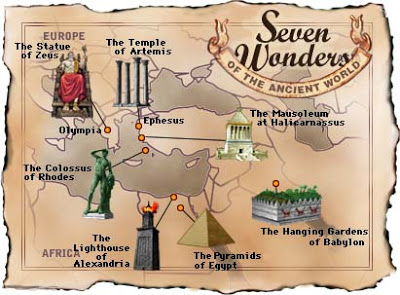
The Seven Wonders of the Ancient World is one of the first travel lists in history. The idea of creating a list of architectural wonders arose following Alexander the Great’s conquest of much of the known world in the 4th century BC, which gave Greek travelers access to the civilizations of the Egyptians, Persians, and Babylonians.
The Greek writers didn’t refer to these monuments as “Wonders” but rather as “top sights” or “things to be seen” (theamata). Each person had his own version of the Seven Wonders list. Some lists contain such ancient wonders as the Walls of Babylon and the Palace of Cyrus, King of Persia.
Till this day, we are being thought at schools, on history classes, about magnificent Seven Wonders of Ancient World. Seven, the most stunning creations of human ingenuity and architecture, till this day, sparks the fire of out imagination. Especially that only one, of the original seven is still standing. Unfortunately, the other ones, did not last the stand of time. No pictures, of course, survived till our times. We only have written records, describing how the wonders looked, and how massive they were.
I studied history, which I love with all my heart. Especially the ancient one, which is my absolute favorite. So, you all can imagine, that writing this post, gives me unimagine joy.
I truly hope that you, as well will enjoy that short trip to the amazing ancient world.
I. Colossus of Rhodes
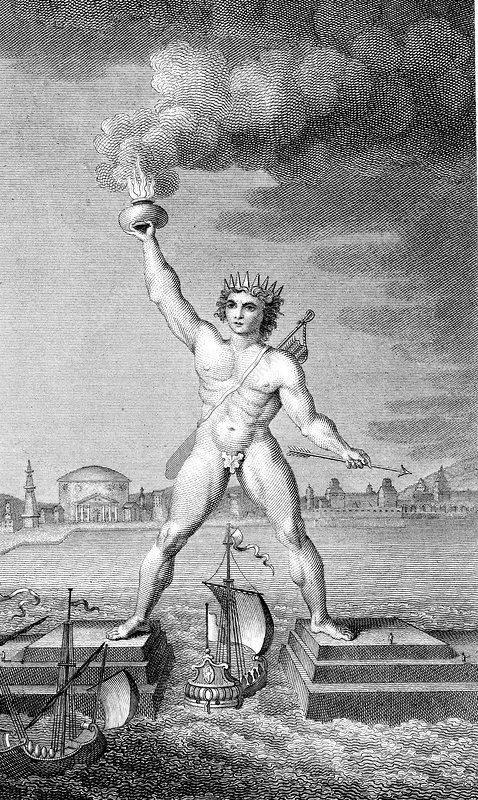
First One of the seven wonders of buildings and works of art distinguished by the Greeks. It was made around 292-280 BC, in bronze, by Chares of Lindos (a student of the famous Greek sculptor Lysipus) in 292-280 BC. According to ancient descriptions, the colossus (meaning a statue) represented the god Helios in upright posture, leaning slightly back, staring into the distance.
The bronze statue was about over 107 feet (30 meters) high and weighed about 70 tons. According to ancient descriptions, the colossus depicted the god Helios in an upright posture, leaning slightly back, looking attentively into the distance, and shielding his eyes with his right hand. His head was decorated with a radiant crown. The whole thing stood on a marble pedestal. Previously, it was believed that the colossus stood with its legs spread over the port entrance. Today it is rather believed that he was standing in the city facing east, which is the direction from which Helios begins its journey through the sky.
In 304. before Christ, King Demetrios from Macedonia, called on the people of Rhodes to fight him against the Egyptian ruler Ptolemy Soter. The people of Rhodes did not want a war with their main trading partner. Demetrios wanted to capture Rhodes before the attack on Alexandria. Although he sent a lot of troops, the Rhodes stopped the attack. Demetrios had a siege tower that was equipped with catapults that could throw 140 lb. stones at exceptionally long distance. The people of Rhodes prayed to Helios. They promised to erect a monument to him if he would help them out of trouble. Helios would suggest the idea, how to defeat Demetrios army, and that worked! Demetrios made peace with Rhodes. Residents began to erect a monument to Helios.
According to legends, first, an iron skeleton was built and covered with clay. A sand rampart was built around the skeleton. Bronze elements were stacked from this shaft. 12 tons of bronze were used, so the colossus was covered with a 1.6 mm thick wall. The entire statue was filled with stones. Only a small space inside the colossus was not filled because a ladder led through it, allowing for repairs.
The statue only survived for 66 years. It was destroyed in the earthquake of 224 BC. The statue snapped at the knees and fell over on to the land. The pharaoh of Egypt offered to pay for the reconstruction of the statue, but the oracle of Delphi made the Rhodians afraid that they had offended Helios, and they declined to rebuild it. According to the oracle, misfortune would fall on Rhodes if the colossus were re-erected. He was lying in water for 900 years, but even then, he aroused full admiration. Plinius the Elder recalls that only a few people were able to put both hands around the big finger of the statue’s hand. In 653. after Chr. the Arabs, who conquered the island, stripped the bronze from the statue and brought it on camels to Edessa.
II. Faros Lighthouse/ Lighthouse of Alexandria
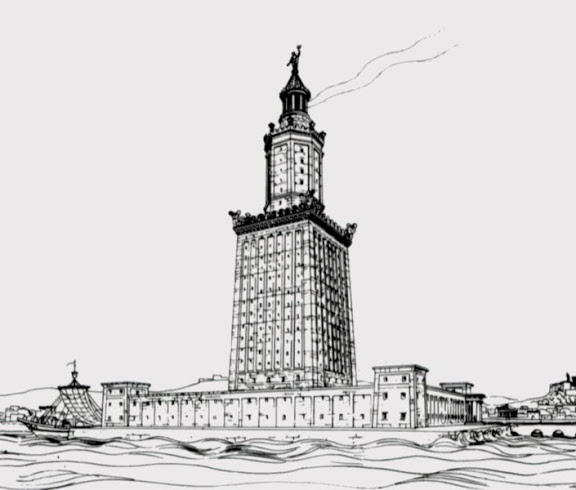
The world’s first lighthouse was built on the island of Faros at the entrance to the port of Alexandria. It was built for 20 years. It was built around 280 BC – 279 BC based on the plans of the architect Sostratos and by order of Ptolemy I, it was completed during the reign of his son Ptolemy II. It is possible that Alexander of Macedon himself was the originator of the construction of the lighthouse.
It is estimated that it was a tower with a height of approximately 120 and 140 meters (390–460 ft). Constructed from large blocks of light-colored stone, the lighthouse was made up of three stages: a lower square section with a central core, a middle octagonal section, and, at the top, a circular section. The lantern was topped with a dome supported by eight columns. A statue of Poseidon, over 20 feet high, was placed on it. After dusk, a fire was lit on the lantern. The firewood was delivered to the top of the tower on donkeys’ backs, and then by porters. The light reflected by metal mirrors was visible from several dozen kilometers and greatly facilitated navigation for sailors going to Alexandria.
The lighthouse remained intact for 1000 years. Only in 769. C.E. it collapsed during an earthquake. In 1477. Mamluk Sultan Kait Bey built a fortress on its foundations, which still stands today. When the lighthouse was built, there was no name for it yet, so it was named after the place where it stood, Pharos.
III. The Mausoleum in Halicarnassus
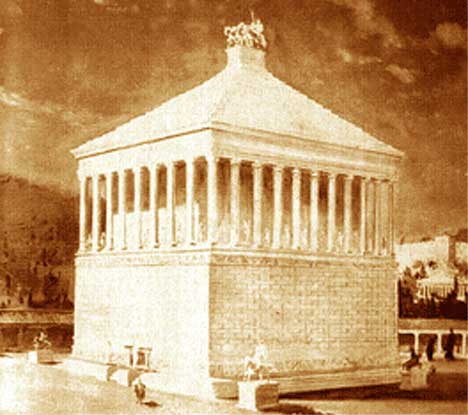
It was the tomb of Mausolus, the Persian governor of Caria, erected around 350 BC. The building was designed at the request of the widow-queen Artemisia by the architects Satyros and Pyteos, and decorated by sculptors Skopas, Leochares, Timoteos and Bryaksis of Kari.
King Mausolos has announced a competition throughout Greece for the most beautiful tomb design. The competition was won by Satyros and Pyteos. Here is their design: on the base 108,2 x 128 feet (33m x 39m) stood a huge cube 88,5 x 108,2 feet (27m long and 33meters) wide. The base and the cube were together 72.17 feet (22 meters) high. The actual tomb stood on it. The cell was surrounded by 39 columns, 36 feet (11 meters) high. There was a 24-step pyramid-shaped roof on the columns. At the top of the roof there was a marble horse cart. It was 161 feet (49 m high (16 floors)). Since then, important people, known as the “mausoleum”, were often buried in similar tombs. On the frescoes and reliefs, sculptors depicted horse-drawn cart races, fights of the Amazons and many mythological characters. Mausolus died in 353. before the end of the tomb. His wife completed the construction work. Artemisia also did not see the finished tomb, as she died two years after her husband. The construction was carried out by architects and craftsmen. In the 12th century AD, the tomb was destroyed in an earthquake. 3 centuries later, the crusaders used the ruins of the tomb to build fortifications.
The mausoleum has not survived to our times – the neglected building, due to the passage of time, human activities, and earthquakes, gradually fell into ruin. In 1404. only the foundations and base of the building remained intact. In 1494 and 1522. Hospitallers at risk of Muslim invasion used raw materials from the mausoleum to strengthen their seat, Castle of St. Peter. During the demolition of the Mausoleum, the sarcophagus of Mausoleus was discovered, which was later lost. Some of the monuments from the mausoleum, incl. sculpture, located in the British Museum in London.
IV. Cheops Pyramid/Great Pyramid in Giza
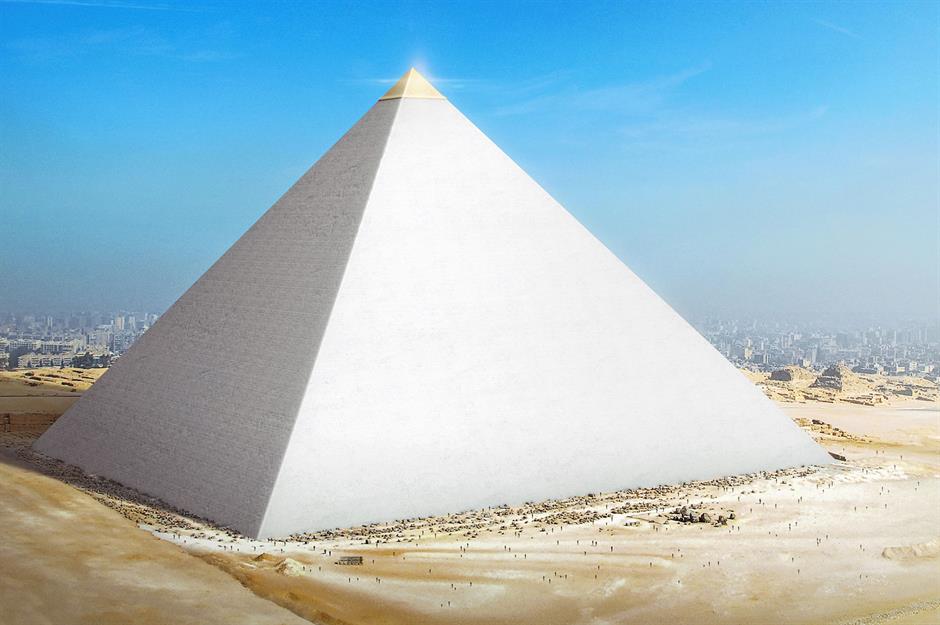
Egyptian pyramid, located in Giza, near Cairo, erected around 2560 BC ( the date is questionable, since there are many different timelines, and chronologies of ancient Egypt) probably according to Hemon’s design, part of the Memphis necropolis, according to the theory widely accepted by the scientific community, in ancient times it was the burial place of Pharaoh Cheops, the second ruler of the 4th Dynasty.
The Cheops Pyramid is the oldest and only well-preserved wonder in the world. It is 481 feet (147 meters) high (50 floors). On its square base of 756 feet (230.34 meters) or 440 Egyptian Royal cubits it would be possible to erect the five largest churches in the world at once: the Basilica of St. Peter in Rome, the Cathedral of St. Paul, Westminster Abbey in London, and the Cathedrals of Florence and Milan. Inside this building there is a branched system of corridors. A 154 feet (47-meter) long passage and a large gallery lead to the pharaoh’s crypt, 34.5 feet long by 17.5 feet wide by 19 feet high (10.5 meters long, 5.30 meters wide and 5.80 meters). There is an empty sarcophagus in the crypt. The whole thing is covered with granite. Pharaoh Cheops ordered the construction of the pyramid immediately after the death of his father Sneferu.
Scientists doubt that the Great Pyramid was the resting place of the Pharaoh. There are three pieces of evidence for this: The crypt of the tomb is not decorated; The sarcophagus where the king should lie lacks a lid; Two ventilation shafts leave the royal chamber, and the dead do not need air.
In 1168 the Arabs destroyed part of Cairo in order not to hand over the city to the Christian crusaders. When the Egyptians rebuilt the city, they torn white limestone slabs from the pyramid and built houses from them. The top of the pyramid and the higher parts of the building were also stolen, which is why the pyramid is now 449.5 feet tall, compare to previous 481 feet (137.20 meters, not 146.6 meters).
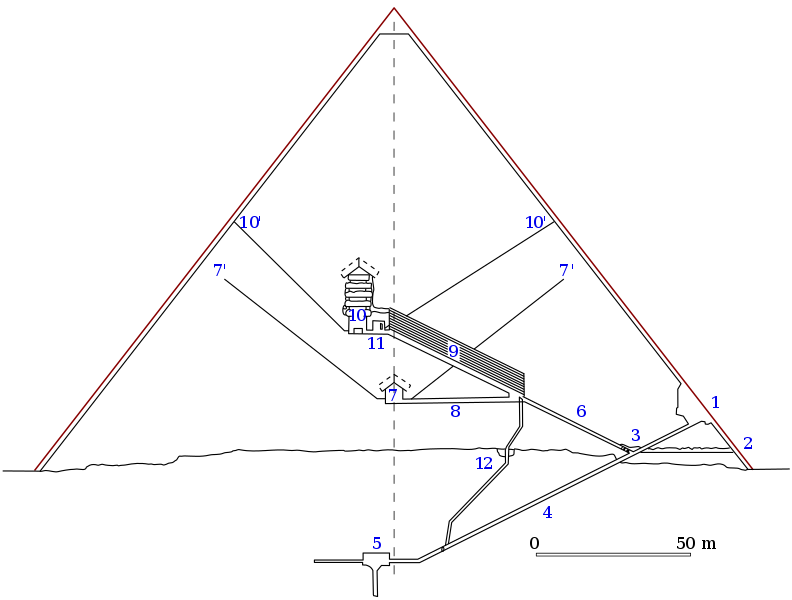
Diagram of a vertical section through the Cheops Pyramid:
1. Former entrance
2. Present entrance hollowed in 820 by order of Caliph Al-Mamun
3. A corridor connecting the corridors. Descending and Ascending
4. Descending Corridor
5. Unfinished chamber 6. Ascending Corridor
7. Queen’s chamber
8. Horizontal corridor
9. Great Gallery
10. The royal chamber with a sarcophagus
11. Passage – vestibule
V. Statue of Zeus at Olympia
About 470 B.C.E. a fundraiser was undertaken throughout Greece to build the temple of Zeus at Olympia. It was supposed to be bigger and more magnificent than all the other temples in Greece. The finished temple was consecrated in 456 B.C.E. The statue was built by Phidias. It lasted only until 426. CE and is known from the Roman copy.
This statue depicted Zeus sitting on the throne. In his left hand he was holding a scepter with an eagle on its head. On his right hand stood the goddess of victory Nike. The head of Zeus was adorned with a wreath of olive branches. He was 43 feet (12 meters) tall. It was decorated with gold and ivory. The sculpture seated on a magnificent throne of cedarwood, inlaid with ivory, gold, ebony and precious stones. The statue of Zeus was the largest and most famous image of Zeus. In paintings, sculptures and statues, Zeus was depicted as a vengeful, cruel, and mischievous god. Zeus, presented by Phidias, is a wise and kind man who does not arouse fear. Athletes considered this statue a patron and judge of the competition.
Phidias first created a scaffold corresponding to the figure of Zeus. Later, the naked parts of the body (face, arms, hands, feet) were covered with a layer of ivory. Zeus’ hair, robe, and sandals were made of gold. It can be assumed that the gold used for the statue weighed 44 talents – 440 lb. (200 kg). Expenditure on gold would be $ 131 million today. The eyes were made of large gemstones. The 43 feet statue holds the figure of Nike itself, which in his hands, was the size of a grown man.
Unfortunately, the statue did not survive to our times. There are two versions explaining its destruction. The first one says that it burned down in the temple fire at Olympia in 426 CE. According to the second, it previously ended up in the imperial palace in Constantinople (394 CE), where it burned down in 475 CE.
VI. The Hanging Gardens of Babylon/The Hanging Gardens of Semiramis
Their uniqueness aroused the admiration of generations, and the amazement and great interest of generations to come. They were built on the orders of King Nebuchadnezzar II (604-562 BCE) between the 7th and 6th centuries BCE. who gave them to his wife, Amytis. Nebuchadnezzar had the gardens built because Amytis missed the lush greenery of her native country, Media, after arriving in Babylon. The construction of the Hanging Gardens has also been attributed to the legendary queen Semiramis, who supposedly ruled Babylon in the 9th century BC, and they have been called the Hanging Gardens of Semiramis as an alternative name
The Hanging Gardens of Babylon consisted of seven separate terraces that together formed one whole. The outer edges of the terraces were overgrown with vines that meandered towards the lower terraces, creating a green steep mountain with trees, hedges, shrubs, and flowers. It looked as if they were floating, which is why they are called hanging gardens. In summer, slaves were busy watering the gardens. There were springs, waterfalls and pools with ducks swimming, frogs jumping, bees and butterflies flying. As Babylon was scattering in the sun, flowers bloomed in the garden of Babylon. This contrast made Babylon’s gardens a wonder of the world. Diodorus Siculus described multi-leveled gardens reaching 75 feet (22 meters ) high, complete with machinery for circulating water.
The famous gardens were destroyed by an earthquake in the 1st century BC.
VII. Temple of Artemis in Ephesus
According to Pliny the Elder in his Natural History, the temple measured 425 feet (129.5 meters) in length and was 225 feet (68.6 meters) wide. It was a temple built by the king of Lydia-Croesus around 560 BCE. Most likely, it replaced an earlier structure that had been destroyed during the Kimmer raid. The Ionian temple was designed by Chersifron and Metagenes of Knossos, with the collaboration of Theodoros of Samos. Excellent quality marble and Lebanese cedar were used for its construction.
The Temple of Artemis was built in a swampy area because it was believed that the soft ground could withstand severe earthquakes. At the beginning, a trench was made for the construction and beams were driven into the bottom to hold the stone foundations. On the foundation a temple was built. The roof was supported by 127 marble columns 59 feet (18 m high (6 floors). The ceiling was made of cedar wood. The door was made of cypress wood and decorated with gold. In the temple stood a two-meter statue of Artemis made of grapevine and with gold ornaments.
The Greeks considered Artemis the goddess of the moon, the ruler of the hunt and the protector of cities, women, and young animals. To begin with, the Greeks worshiped Artemis as a sacred tree. She was the daughter of Zeus and the sister of Apollo.
In 356. B.C.E. Herostrates had crept into the temple at night and set fire to the temple and within a short time it became a ruin. Herostrates confessed in court that he had done this to make his name famous. He was condemned to severe torture. The people of Ephesus chose not to pronounce his name. However, an almost intact statue of Artemis was found under the ruins. It was considered a miracle and it was decided to build another temple. Gifts were pouring in from all over Greece to build a new temple. The new temple became a religious and commercial center. Business was done here, and the temple was the largest bank in all of Greece. When Ephesus came under Roman rule, the goddess Artemis became the goddess of the hunt Diana. In 262. C.E. the temple was partially destroyed by the Goths. Then the Roman Emperor Theodosius I raised Christianity to the rank of state religion and ordered all pagan temples to be closed. Whoever needed stones for construction could take them from the temple. Artemision became a quarry.
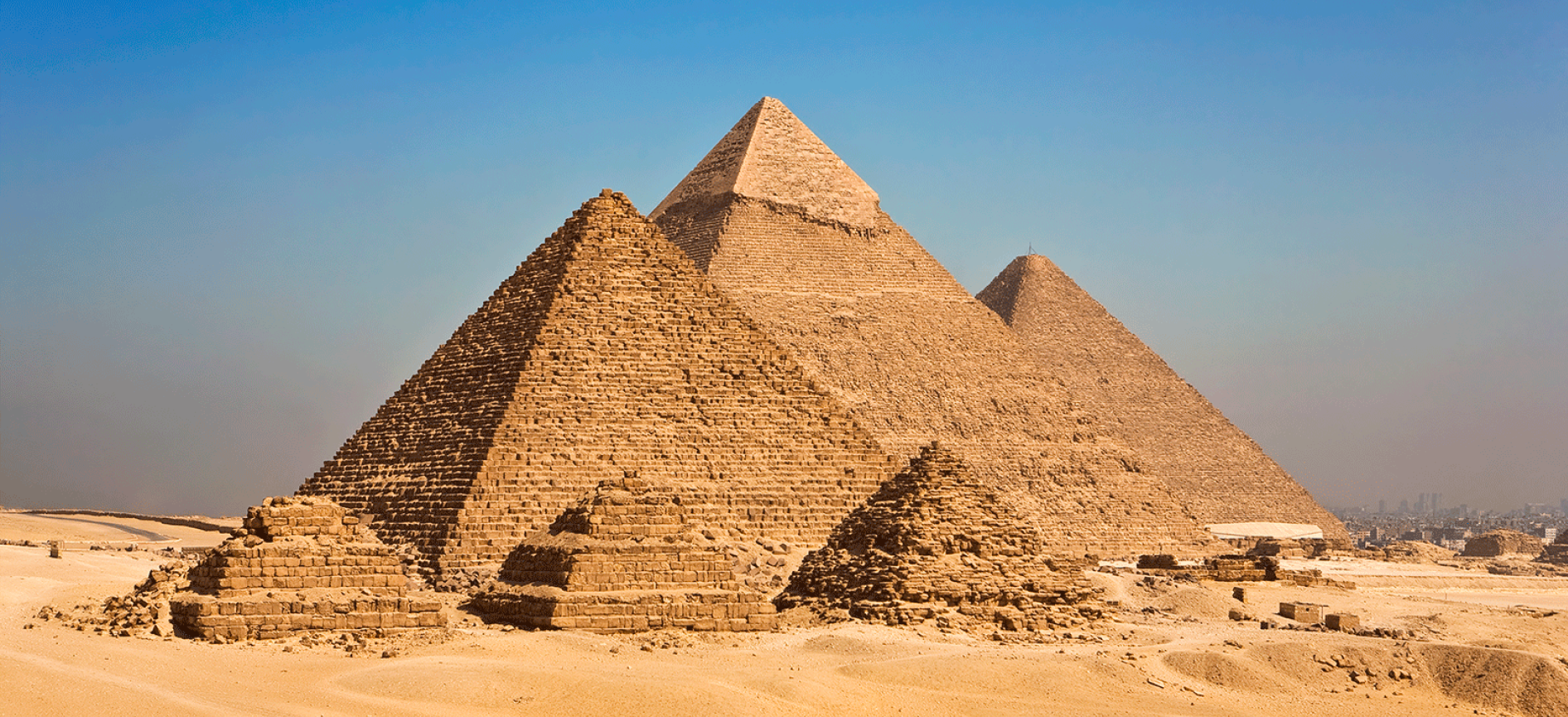
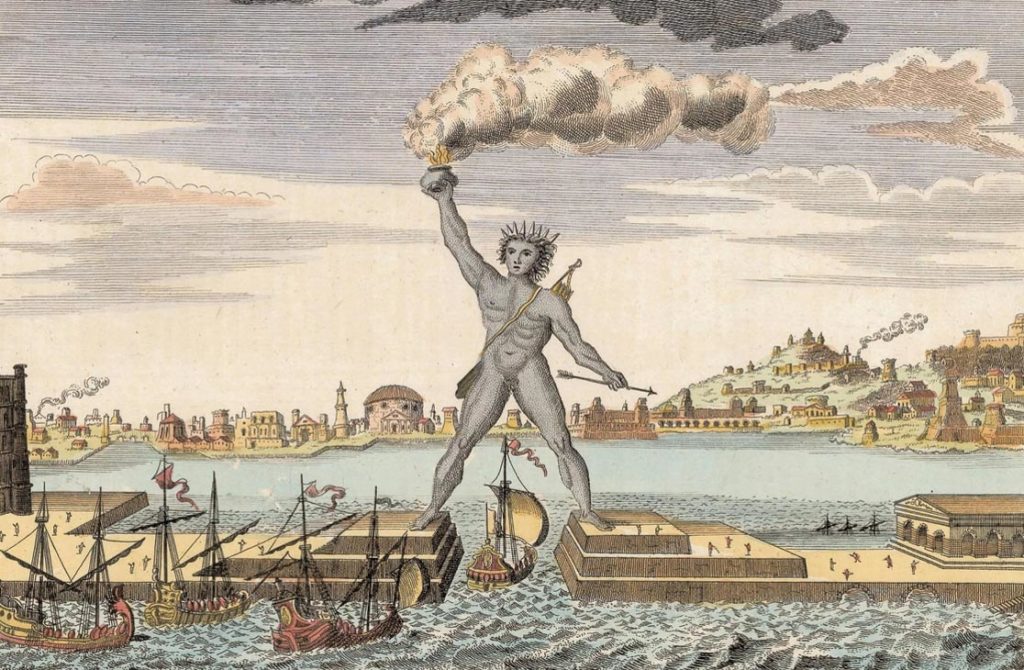
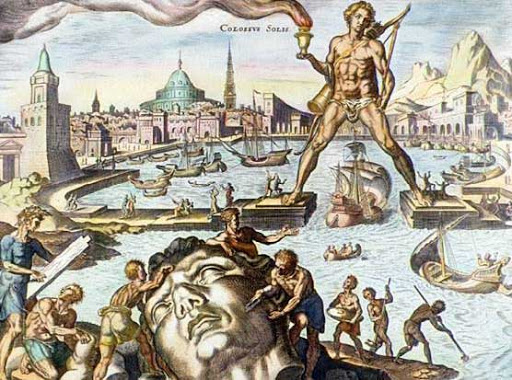
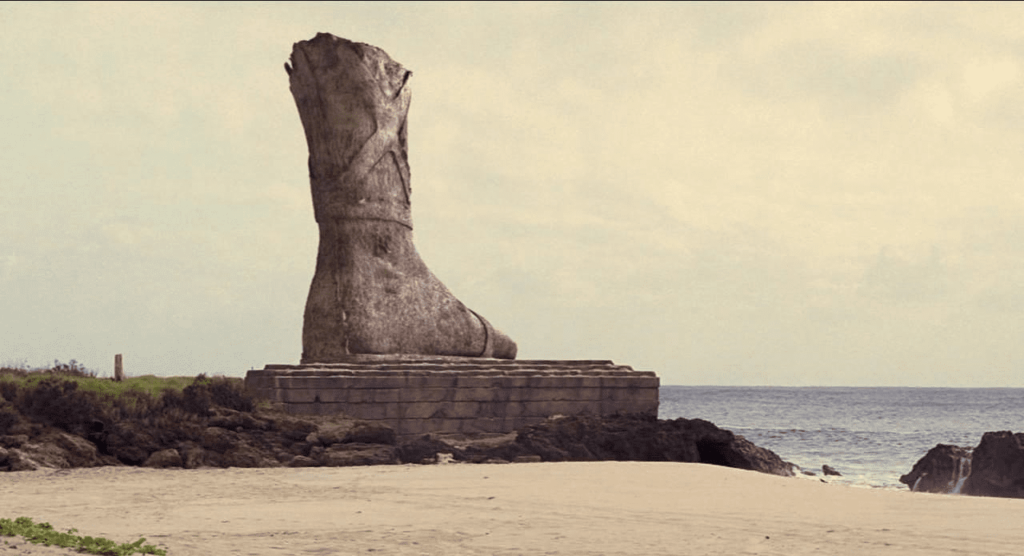
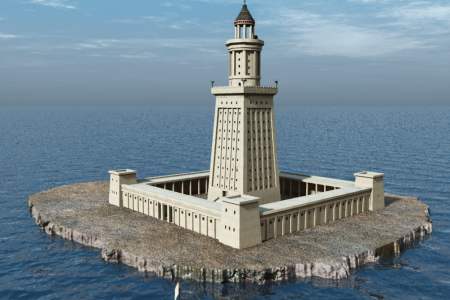
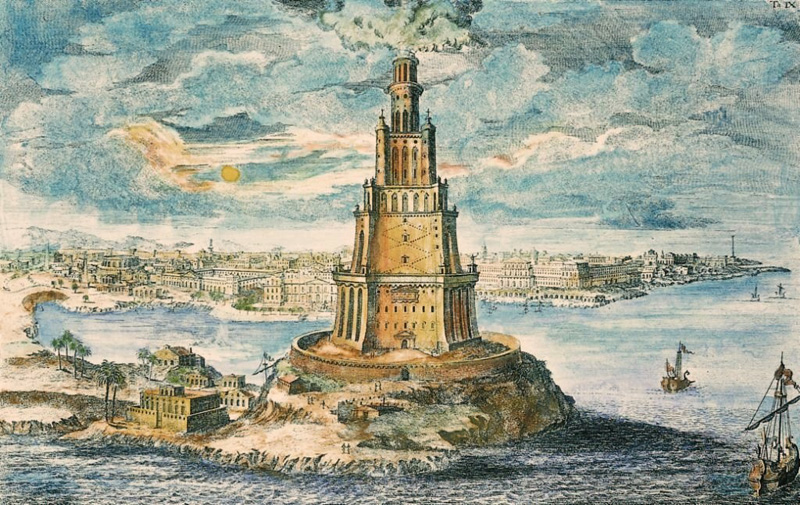
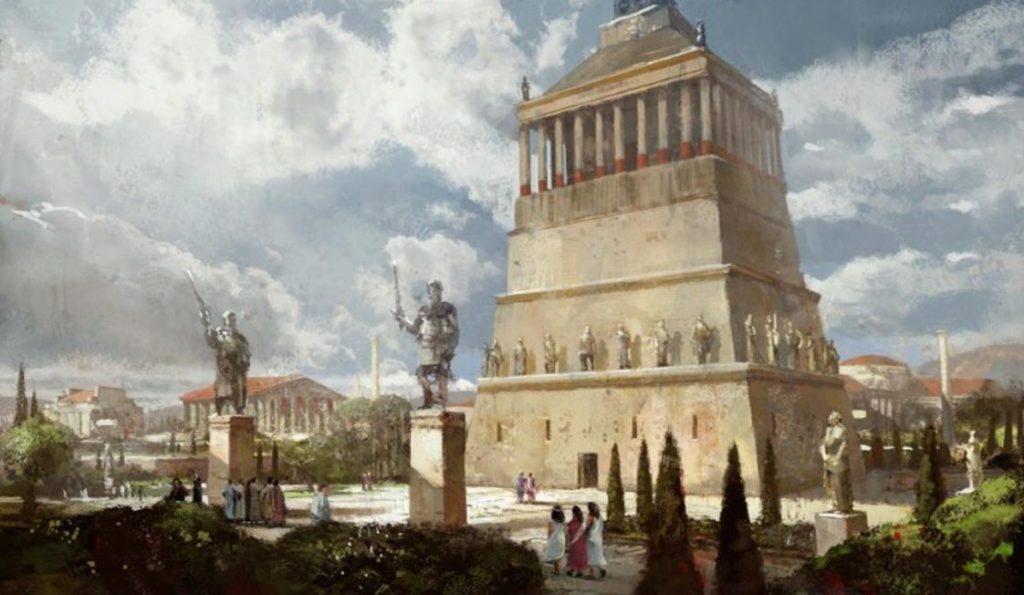
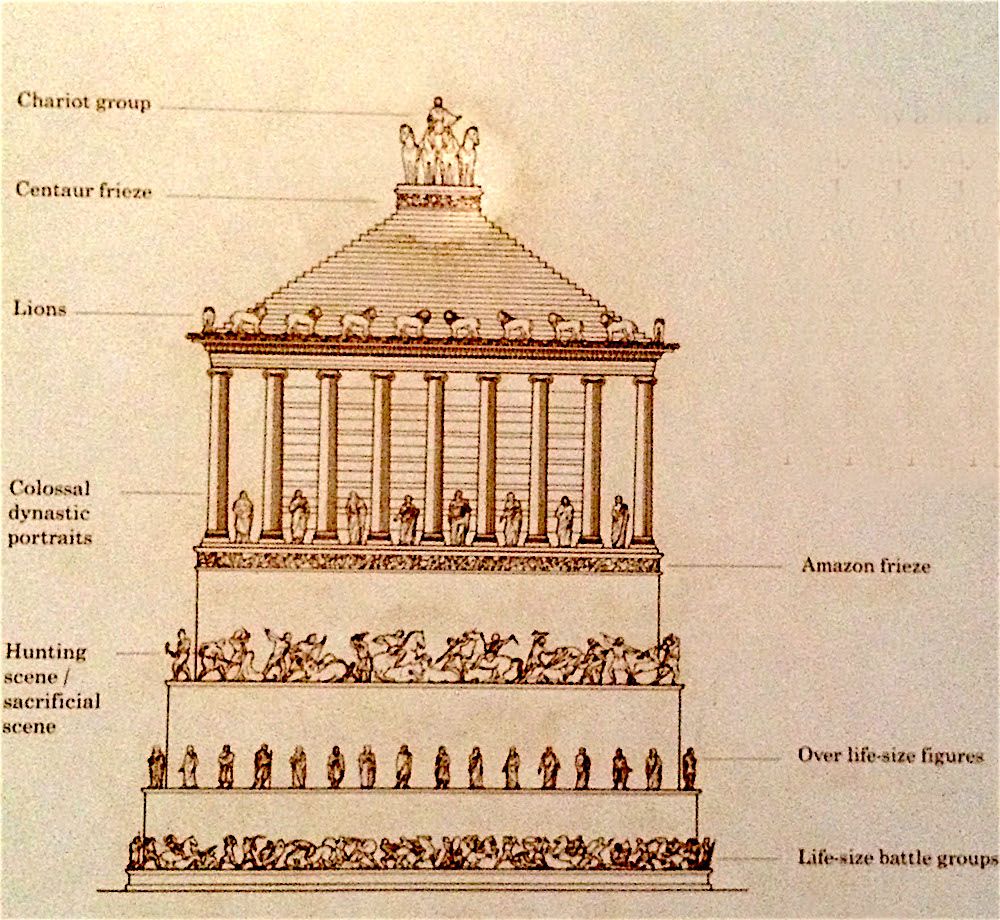
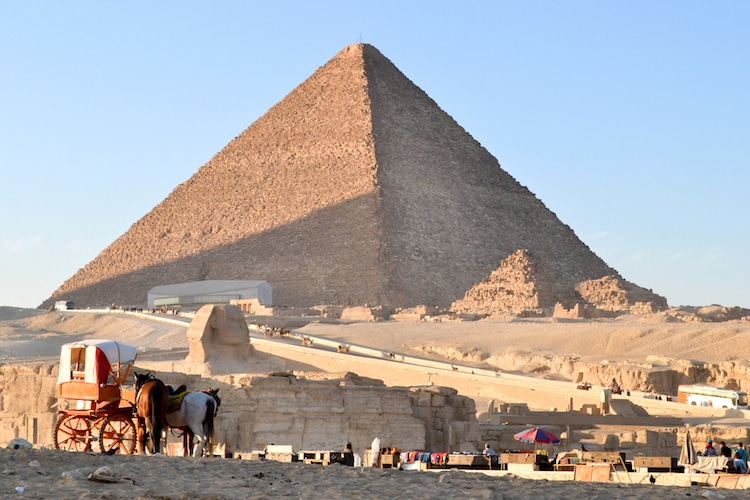
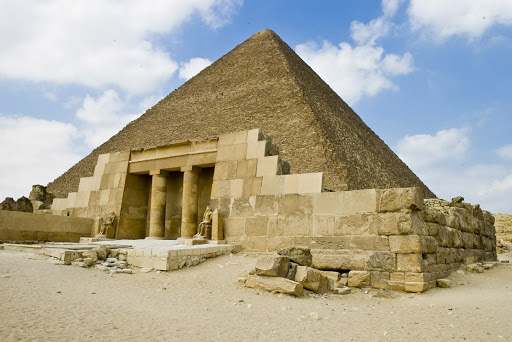
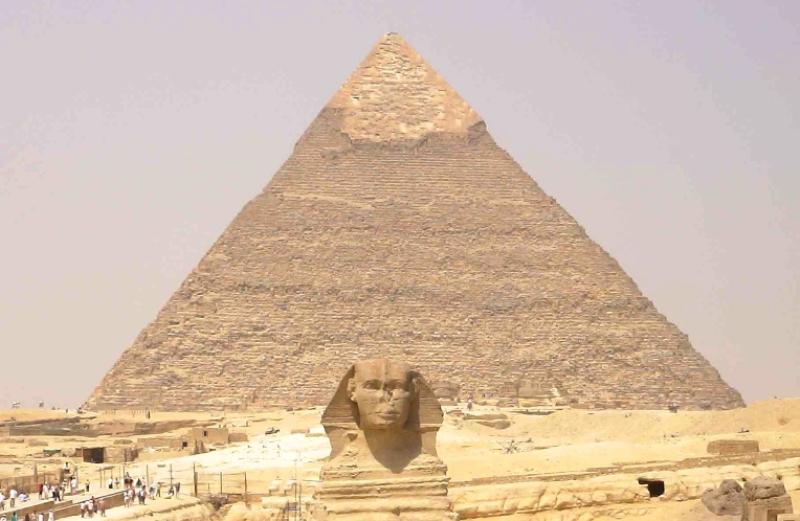
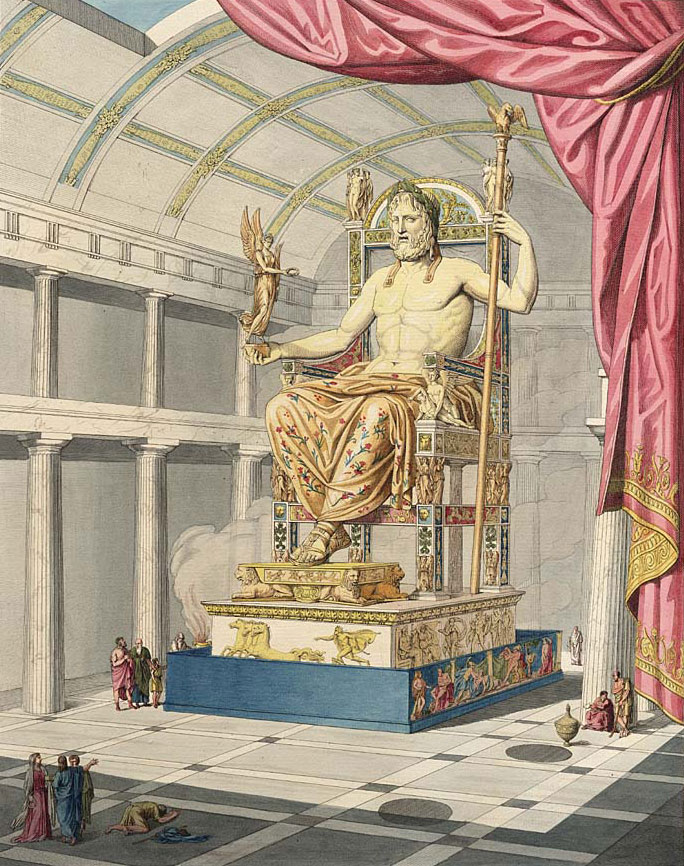
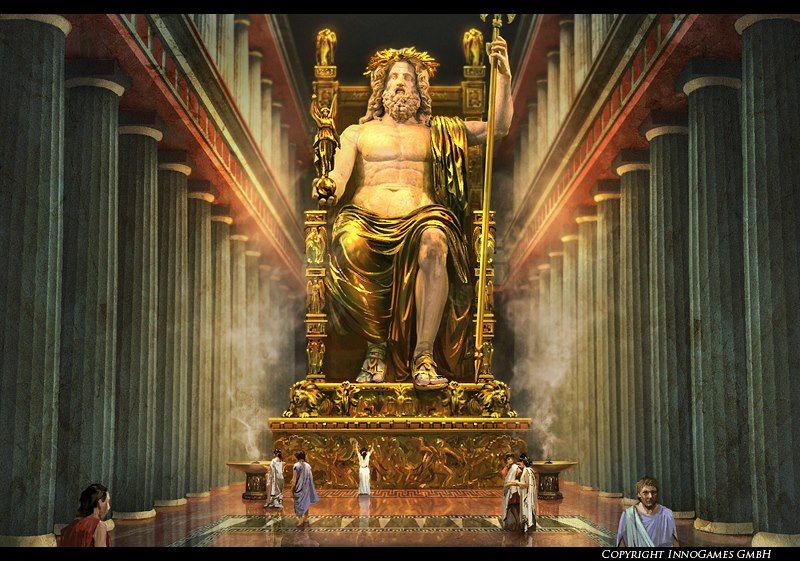
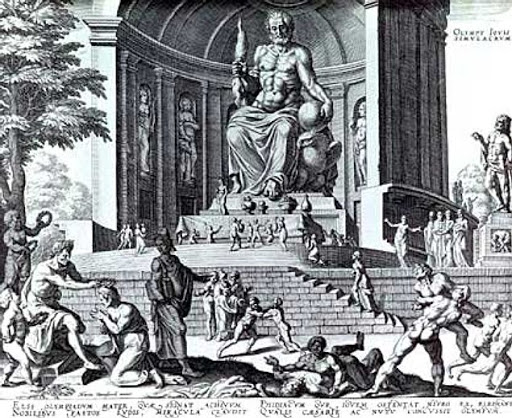
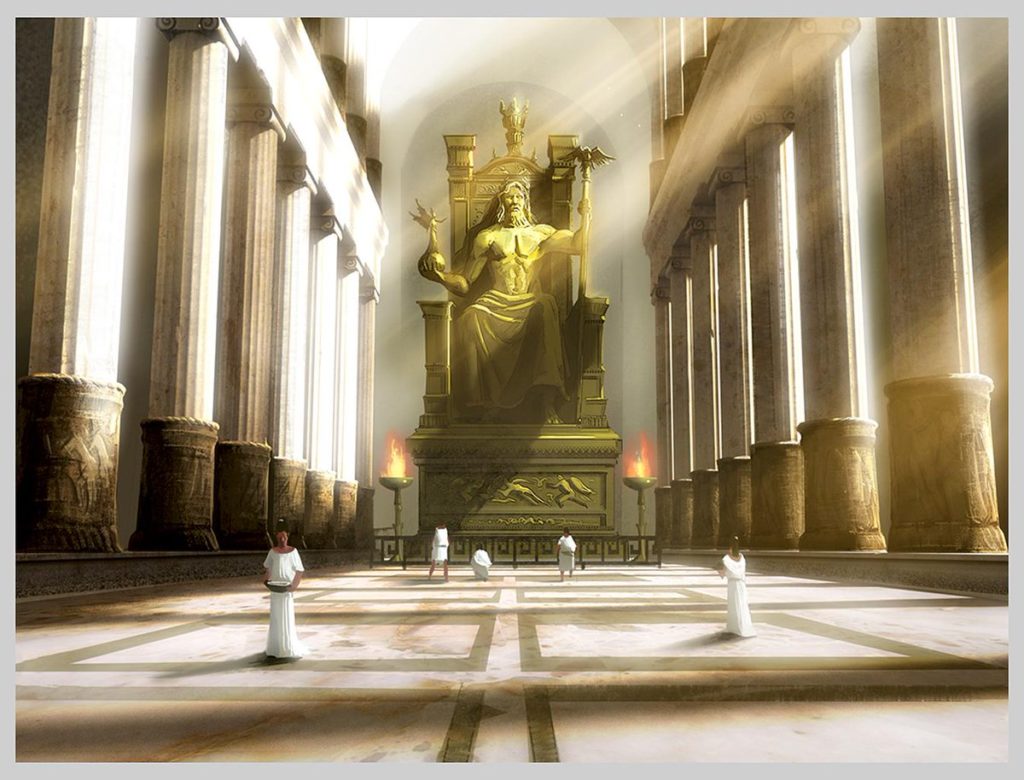
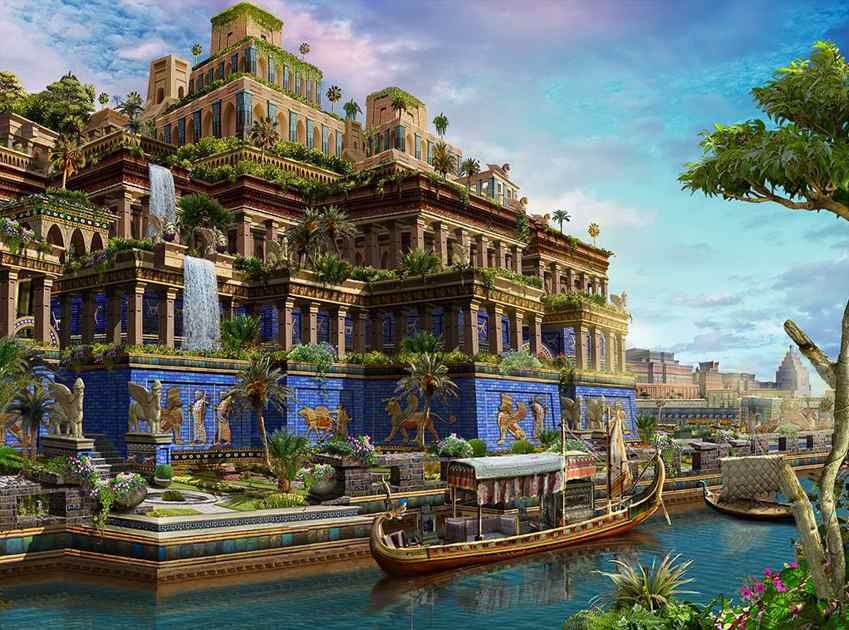
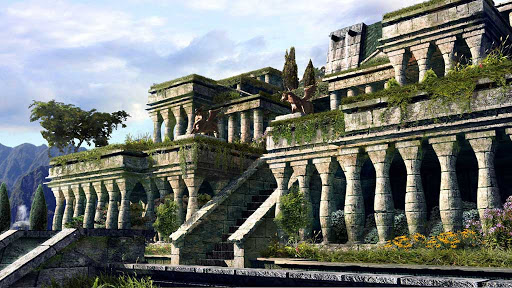
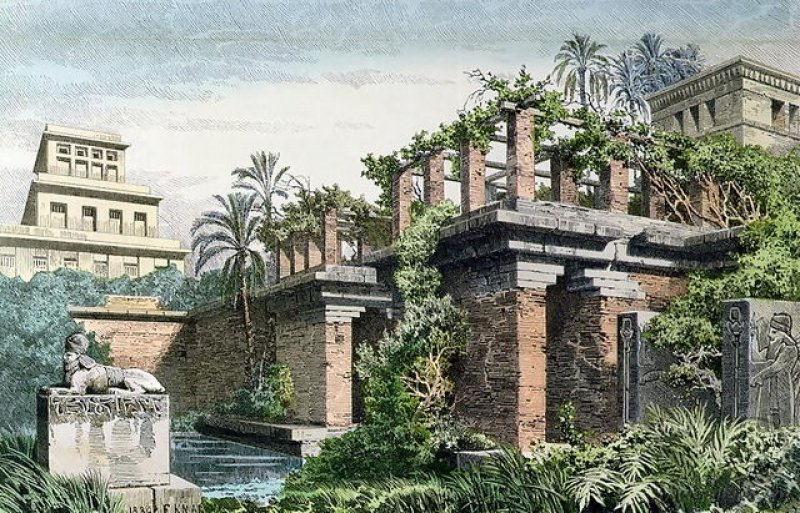
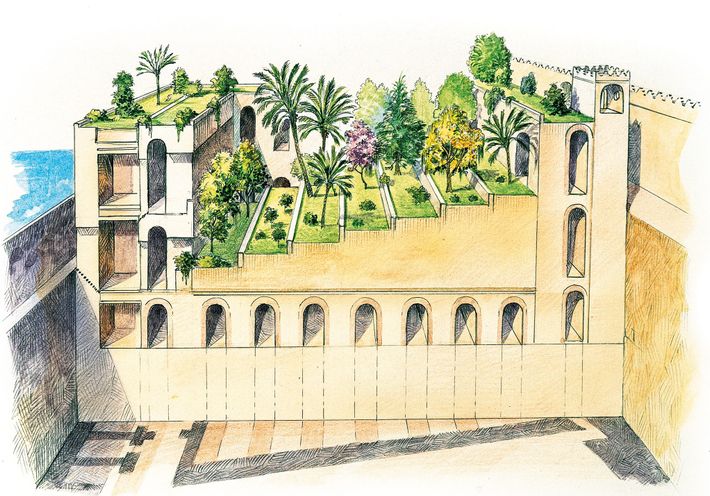
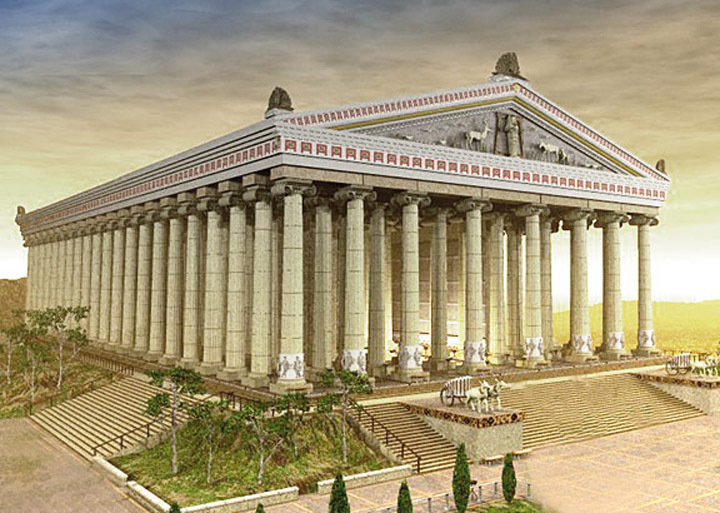
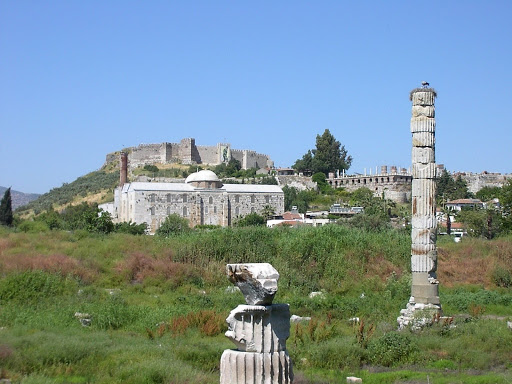
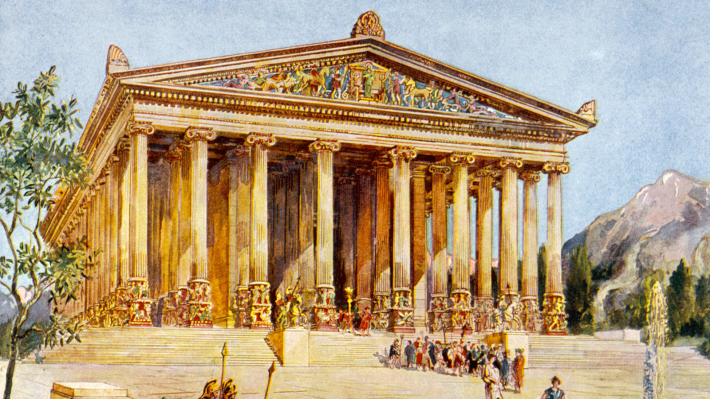



Wow! I never was one who had a love for ancient history and truly didn’t realize what the ancient wonders of the world were. I should probably be more embarrassed that the pyramid is the only one I knew of 🤦. Thanks for the informative article.
Aww. thank you for Your kind words. I love Ancient History, and it makes me very happy that i can share it with you.